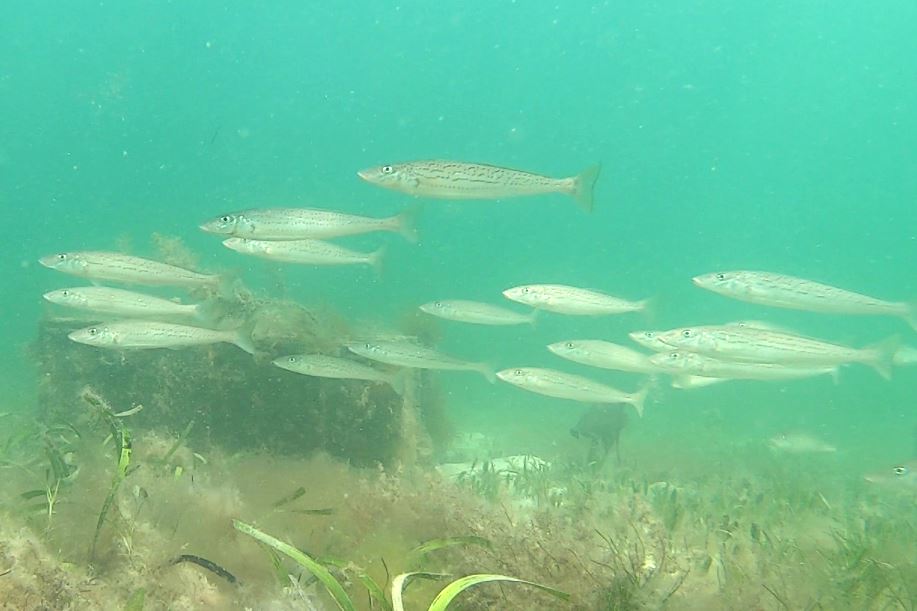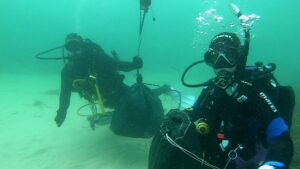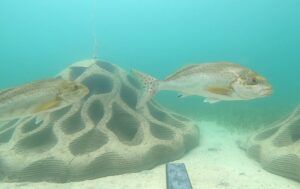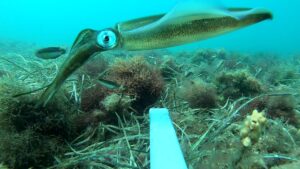
As Australians head to the coast for summer holidays, spare a thought for the humble shellfish reefs and ecosystems that support healthy habitats and are the fish ‘nurseries’ for marine life and highly prized seafood.
 Flinders University researchers are seeking new insights into understanding how shellfish reefs – including oyster, mussel and razor clam (pinnid) reefs – support marine biodiversity.
Flinders University researchers are seeking new insights into understanding how shellfish reefs – including oyster, mussel and razor clam (pinnid) reefs – support marine biodiversity.
“This knowledge will aid in their conservation and restoration in Australia and globally,” says Bradley Martin, Flinders University PhD candidate, who led a sweeping review of global research of shellfish reefs, just published in the scientific journal Restoration Ecology.
“This synthesis of research clearly shows a lack of data on shellfish reef fishes,” says Mr Martin, from the Ecosystem Resilience Research Group at Flinders University’s College of Science and Engineering.
As centuries of human degradation continue to impact shellfish reefs, including the loss of 85% of global oyster reefs, and >90% of Australian oyster reefs, these impacts are likely to also effect fishes, including species with recreational and cultural value, he says.

Understanding where and how to monitor shellfish reef fishes is critical for supporting shellfish reef conservation and delivering fisheries benefits.
This led the Flinders University marine biologists to trawl through more than 110 international studies assessing shellfish reef fishes to investigate fish monitoring methods and research gaps applicable to southern Australia.
In the systematic review of 116 peer reviewed studies, researchers complied studies from 16 countries, 23 reef-forming shellfish, and 26 different fish monitoring approaches. About 60% of studies assessed how fishes responded to shellfish reef restoration. However, they also found that 67% of studies were carried out in the United States – and most (more than 80%) focused only on oyster reefs.

In Australia, shellfish reef restoration projects are helping to recover degraded coastal systems and enhance fish habitat, but much more research is needed to support and evaluate these efforts, researchers say.
Shellfish reefs provide important refuge and foraging grounds, as well as nurseries for diverse fish communities, including species with major socioeconomic value, which in southern Australia include whiting, snapper, and bream.
In another recently published study in collaboration with Flinders researchers, it was estimated that restored Australian shellfish reefs generate an average fish production of 6,186 kg per hectare per year, with fisheries species making up 98% of this production.

Fishes were surveyed using stereo-video cameras and assessed using artificial intelligence software from oyster reefs constructed as apart of The Nature Conservancy’s Reef Builder program.
Flinders University researchers and collaborators are working to enhance the knowledge and monitoring needed to support the conservation and restoration of important coastal ecosystems.
For example, research published in Marine Environmental Research, led by Flinders Honours student Georgia Tiller, has demonstrated that dense patches of artificial razor clams (pinnids) in the Port River rapidly enhance biodiversity – particularly gobies, shrimps and juvenile blue swimmer crabs (see video attached).
“Our research efforts include understudied shellfish ecosystems and reef designs, including those characterised by native and introduced oysters, and razor clams (pinnids),” says Dr Ryan Baring, Flinders University coastal and marine lecturer.
“We found that existing research on shellfish reef fishes was concentrated to northern America, with few studies in tropical regions, or beyond oyster reefs – like mussel and pinnid reefs,” says Dr Baring, senior author of the new article in Restoration Ecology.
“Past studies have used diverse fish monitoring methods, ranging from underwater video to various nets and traps, but they are under-reporting valuable monitoring information, such as the reef types or water parameters.
 “By understanding these trends, we made recommendations to guide future monitoring approaches and identify key research gaps.”
“By understanding these trends, we made recommendations to guide future monitoring approaches and identify key research gaps.”
Other papers, ‘Estimating enhanced fish production on restored shellfish reefs using automated data collection from underwater videos’ (2024) and ‘Razor clam (Pinna bicolor) structural mimics as drivers of epibenthic biodiversity; a manipulative experiment’ (2024) by Georgia Tiller, Bradley Martin and Ryan Baring, published in Marine Environmental Research DOI: 10.1016/j.marenvres.2024.106658
The new review article ‘Fishing for more than shellfish: a systematic review of fish community monitoring of shellfish reefs’ (2024) by Brad Martin, Charlie Huveneers, Simon Reeves and Ryan Baring has been published in Restoration Ecology First published: 07 November 2024 https://doi.org/10.1111/rec.14323

